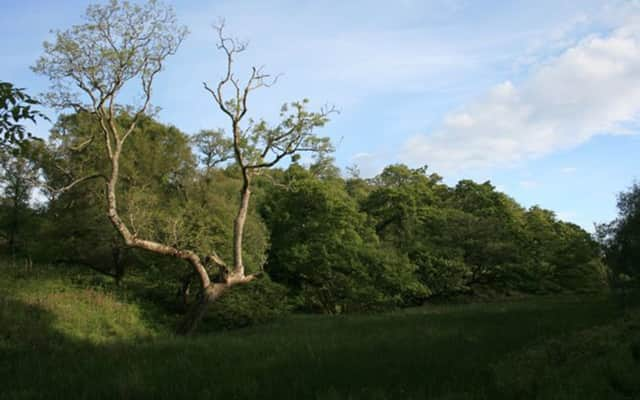Visit Scotland’s treasured temperate rainforest


Imagine a rainforest and a steamy tangle of trees in a far-flung place readily springs to mind: the Amazon, in Brazil, or perhaps the Congo. Because of their exotic nature, a rainforest visit is on the bucket list of many people. If you’re one of them, read on: this article could save you hundreds of pounds and thousands of miles. You see, some of the world’s rarest rainforest habitats occur right here at home.
Rainforests can be found along the west coast of Scotland, where the moisture-laden Gulf Stream from the Atlantic Ocean comes into contact with the land and condenses into rain. It is the sheer quantity of rain, coupled with a mean annual temperature that is neither too hot nor too cold, that enables temperate rainforests to occur here in Scotland and in other isolated pockets around the world.
Advertisement
Hide AdAdvertisement
Hide AdThese rainforests are fragmented and, with around 50 per cent having been destroyed already, some people believe these habitats have become even more endangered than their more famous tropical counterparts.
The Royal Botanic Garden Edinburgh has made Scotland’s native rainforests a conservation priority.
Its scientists are working with government-funded body Scottish Natural Heritage and researchers at the University of Glasgow to identify isolated and degraded pockets of this habitat and restore them to their former glory.
Time is of the essence: while many European temperate rainforests have already become degraded as a result of pollution or poor management, we are fortunate our rainforests in Scotland represent some of the best examples of this habitat – habitats that hold many stories for those able and willing to listen.
It is in the vivid lichen communities adorning the trees that the impact of historic events on the forests can be most easily seen.
Known as epiphytes, these species take nothing but support from the trees on which they grow. A language not often taught, nor easily understood, lichenology remains a mystical science.
However, once they become fluent, patient scholars are able to read the long and often complicated stories the woodlands have to tell through the lichen communities that dwell on them – woeful tales of industrial pollution and acid rain, or earnest accounts of clean air and sympathetic management.
Indeed, the lichens characterise temperate rainforests. Rather than the better-known candidates, the trees, the birds or the mammals, it is the lichens which really make a temperate rainforest what it is.
Advertisement
Hide AdAdvertisement
Hide AdDiverse communities dominated by large leafy lichens that seemingly drip from the trees are found within these habitats all around the world. In Scotland, we have such large populations of some species that we have an international responsibility to look after them.
So, why are lichens important? What do they do? Such questions are increasingly common in times when dwindling financial resources mean that there is a real pressure in conservation science to prove why something is “important” before we can act. Just being a living thing on the planet, it seems, is no longer enough.
Species have to “do” something of value to humans, such as recycling our waste, providing the soil with nutrients, or bringing in the tourists. All of which will earn a species or habitat brownie points and a place on the planet Earth of the future.
Although I’m all for this new approach in terms of ensuring that we value nature and the vital part it plays in all of our lives, I’d like to think that all species have a place in this world. If we’re squeezing some out, then we should try amending our ways, rather than saying: “Yes, it’s all very well that you’ve always lived here, but what do you do?”
However, the truth is that lichens really do much more than simply adorn our trees and beautify our rainforests. There is whole raft of reasons to secure lichens a place on a hypothetical Noah’s Ark.
They are able to fix atmospheric nitrogen, a rare skill that few species have mastered; they are primary producers of biomass and play an important role in soil formation, and they provide a habitat to a whole array of creatures, thus holding up an important corner of the food web.
By conserving the temperate rainforests and the lichens living within them, the Royal Botanic Garden Edinburgh is not only protecting an incredibly rare and special habitat, it is also protecting an array of important creatures within the forests.
So why not get out there and see for yourself the true wonders of our native rainforest, and save a few pounds along the way!
• Sally Eaton is Scottish plants conservation officer (cryptogams) at the Royal Botanic Garden Edinburgh
SEE ALSO